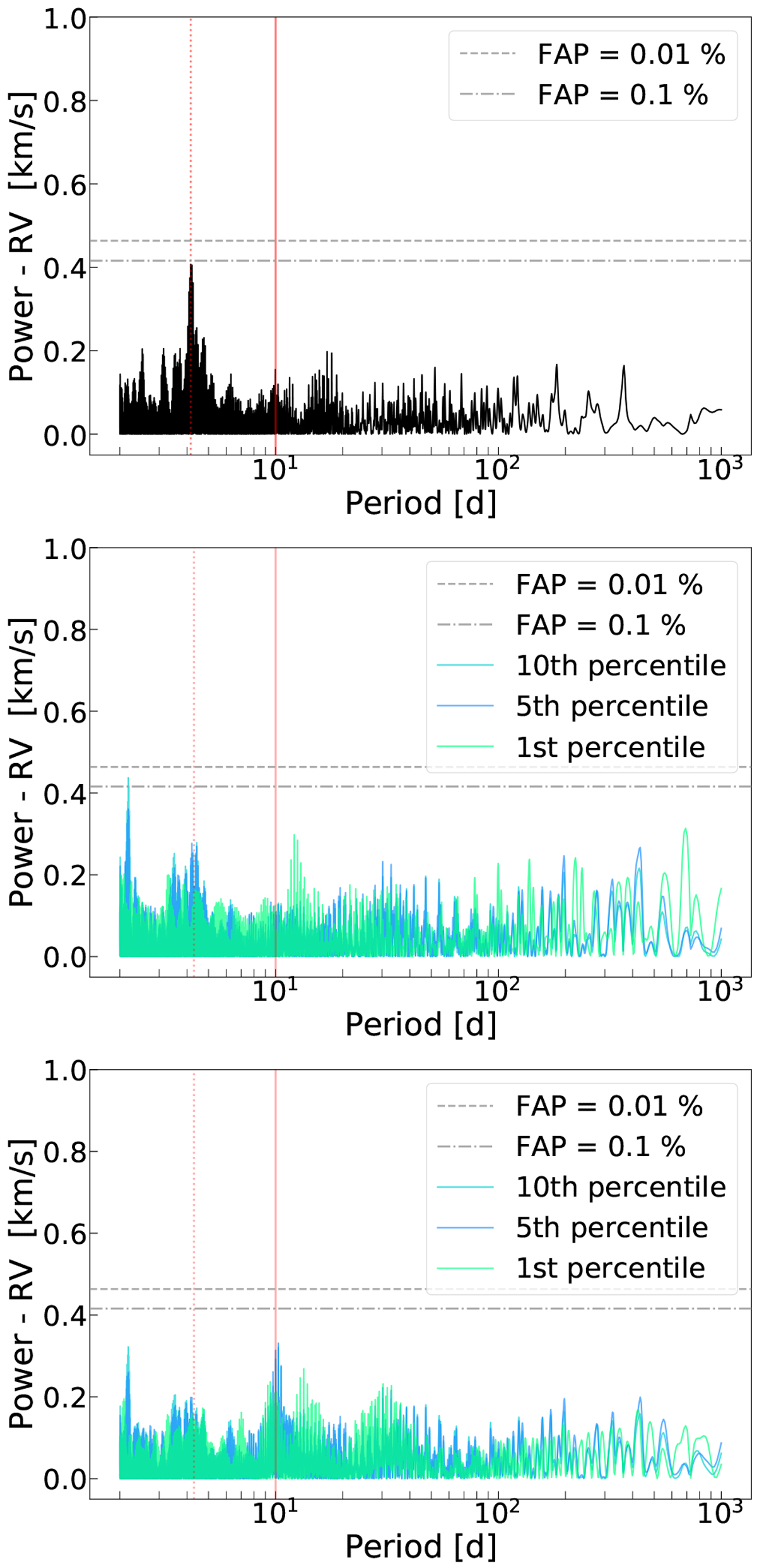Fig. 10

Download original image
GLS periodograms of the full RV time series for EV Lac. Top: periodogram of the data set obtained with the full mask and a 2σNARVAL injected planet. Middle: periodograms of the residuals (of a sinusoidal fit at the stellar rotation period) obtained with the three 2010-trained percentile sub-masks and a 2σNARVAL injected planet. Bottom: Periodograms of the residuals (of a sinusoidal fit at the stellar rotation period) obtained with the three 2010-trained percentile sub-masks and a 4σNARVAL injected planet. In each panel the stellar rotation period and injected planetary period are indicated by a dotted and solid red line, respectively. When the 2010-trained sub-masks are used a systematic quench of the peak is observed at the stellar rotation period and the rise in the peak is seen at the injected orbital period as the mass of the planet increases. In the 2σNARVAL case the planetary peak is not distinguishable because the dispersion is still twice as large while in the 4σNARVAL case the peak becomes the highest one (with FAP > 1%).
Current usage metrics show cumulative count of Article Views (full-text article views including HTML views, PDF and ePub downloads, according to the available data) and Abstracts Views on Vision4Press platform.
Data correspond to usage on the plateform after 2015. The current usage metrics is available 48-96 hours after online publication and is updated daily on week days.
Initial download of the metrics may take a while.


